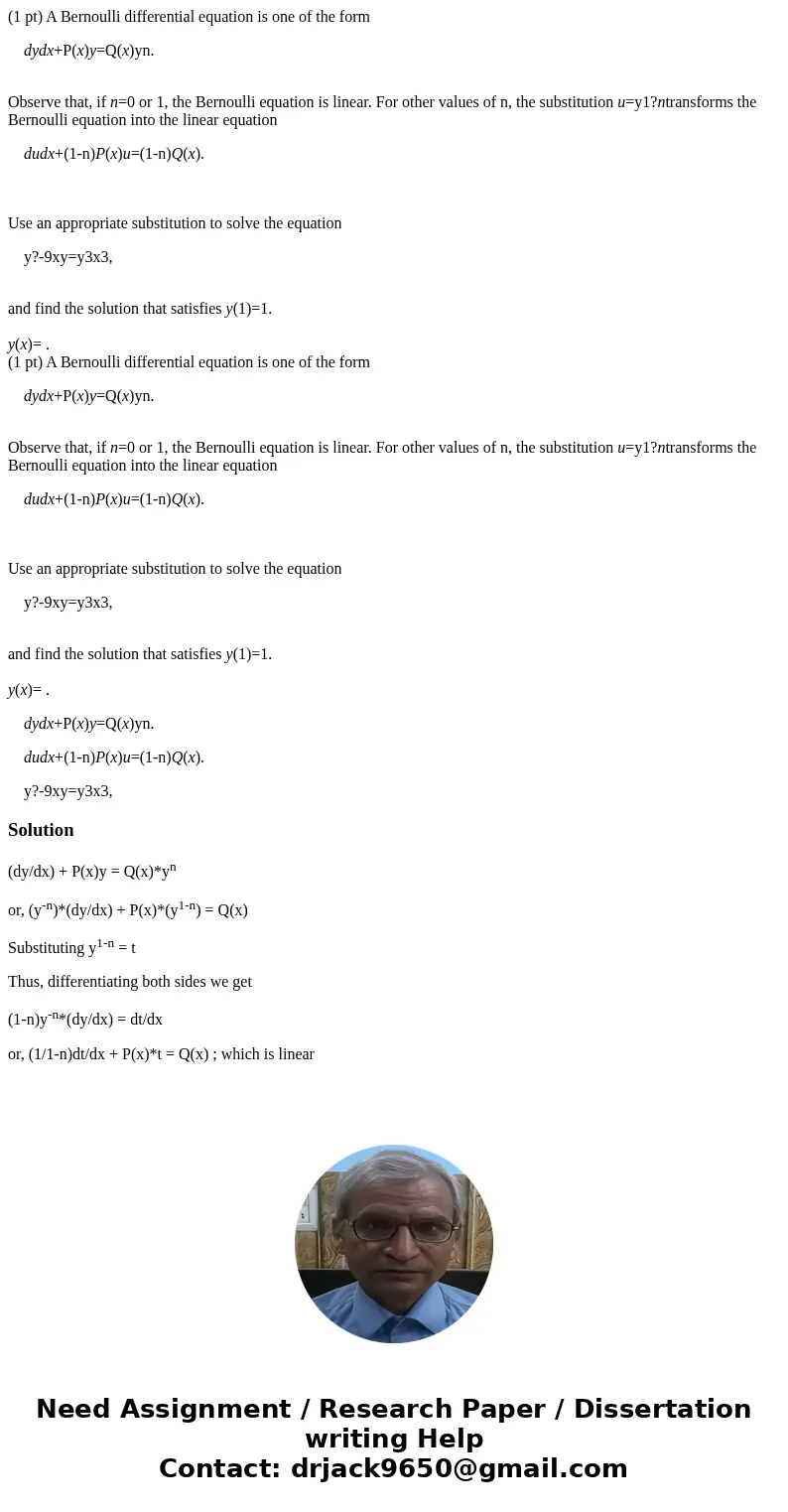1 pt A Bernoulli differential equation is one of the form dy
(1 pt) A Bernoulli differential equation is one of the form
Observe that, if n=0 or 1, the Bernoulli equation is linear. For other values of n, the substitution u=y1?ntransforms the Bernoulli equation into the linear equation
Use an appropriate substitution to solve the equation
and find the solution that satisfies y(1)=1.
y(x)= .
dydx+P(x)y=Q(x)yn.
Observe that, if n=0 or 1, the Bernoulli equation is linear. For other values of n, the substitution u=y1?ntransforms the Bernoulli equation into the linear equation
dudx+(1-n)P(x)u=(1-n)Q(x).
Use an appropriate substitution to solve the equation
y?-9xy=y3x3,
and find the solution that satisfies y(1)=1.
y(x)= .
(1 pt) A Bernoulli differential equation is one of the form
Observe that, if n=0 or 1, the Bernoulli equation is linear. For other values of n, the substitution u=y1?ntransforms the Bernoulli equation into the linear equation
Use an appropriate substitution to solve the equation
and find the solution that satisfies y(1)=1.
y(x)= .
dydx+P(x)y=Q(x)yn.
Observe that, if n=0 or 1, the Bernoulli equation is linear. For other values of n, the substitution u=y1?ntransforms the Bernoulli equation into the linear equation
dudx+(1-n)P(x)u=(1-n)Q(x).
Use an appropriate substitution to solve the equation
y?-9xy=y3x3,
and find the solution that satisfies y(1)=1.
y(x)= .
dydx+P(x)y=Q(x)yn.
dudx+(1-n)P(x)u=(1-n)Q(x).
y?-9xy=y3x3,
Solution
(dy/dx) + P(x)y = Q(x)*yn
or, (y-n)*(dy/dx) + P(x)*(y1-n) = Q(x)
Substituting y1-n = t
Thus, differentiating both sides we get
(1-n)y-n*(dy/dx) = dt/dx
or, (1/1-n)dt/dx + P(x)*t = Q(x) ; which is linear

 Homework Sourse
Homework Sourse